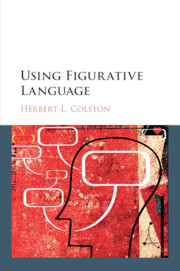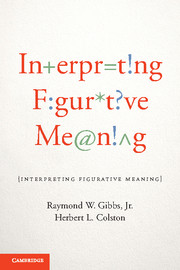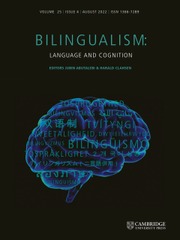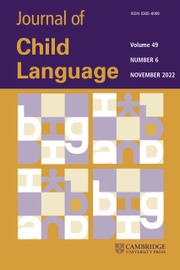How Language Makes Meaning
Embodiment and Conjoined Antonymy
£100.00
- Author: Herbert L. Colston, University of Alberta
- Date Published: November 2019
- availability: In stock
- format: Hardback
- isbn: 9781108421652
£
100.00
Hardback
Other available formats:
Paperback, eBook
Looking for an inspection copy?
This title is not currently available on inspection
-
Language's key function is to enable human social interaction, for which people are motivated to engage by powerful brain mechanisms. This book integrates recent work on embodied simulations, traditional meaning-making processes and a myriad of semantic and other meaning contributors to formulate a new model of how language functions following a pattern of conjoined antonymy. It investigates how embodied simulations,semantic information, deviation, omission, indirectness, figurativity, language play, and other processes leverage rich meaning from only a few words by using inherently biological, cognitive and social frameworks. The interaction of these meaning-making components of language is described and a language-functioning model based on recent neuroscientific research is laid out to allow for a more complete understanding of how language operates.
Read more- Provides a new embodied and social framework for how language functions
- Enables a better understanding of how all the meaning-making components of language interact
- Integrates the language-functioning model with recent neuroscientific research
Reviews & endorsements
'If you are a linguist, psychologist, or social scientist interested in how language is expanded and manipulated in actual use, this book will enthuse you. With in-depth analyses of real-world conversations, media fragments, and literary texts, the author masterfully shows how figurative, imprecise, indirect, and playful speech shapes communication.' Dirk Geeraerts, Katholieke Universiteit Leuven, Belgium
See more reviews'This is a marvelous monograph. It convincingly argues that meaning-making is prompted by conjoined antonymous parts. The other key feature of the book is how neurologically driven social motivations intertwine with the functioning of the 'other side of meaning' processes, which arise from the interaction of language with a myriad of mental and social processes.' Angeliki Athanasiadou, Aristotle University of Thessaloniki, Greece
'The renowned cognitive psychologist and linguist Herbert L. Colston shows how meaning is created in language through 'embodied simulations'. Written in a non-technical style and using examples from popular culture or personal anecdotes, this book explains how omission, indirectness, and figurativeness maximize the meaning of what is said by assisting patterns of pragmatic effects.' Linda Thornburg, Co-editor of the book series 'Human Cognitive Processing'
'This book breaks new ground by furnishing familiar models of 'meaning making' with new outfits. It provides a guided tour through the adjacent territories of linguistics and psychology, with abundant examples from current language-in-use. Importantly, the book also builds a bridge between recent experimental psycholinguistic findings and classical semiotic conceptualization.' Jacob L. Mey, Syddansk Universitet
Customer reviews
Not yet reviewed
Be the first to review
Review was not posted due to profanity
×Product details
- Date Published: November 2019
- format: Hardback
- isbn: 9781108421652
- length: 300 pages
- dimensions: 235 x 156 x 20 mm
- weight: 0.53kg
- availability: In stock
Table of Contents
1. The coin toss
2. Deviance
3. Omission
4. Imprecision
5. Indirectness
6. Figurativeness
7. Language play
8. The social media
9. The art of language
10. The end game
Epilogue: a clearing revealing an eclipse
References
Index.
Sorry, this resource is locked
Please register or sign in to request access. If you are having problems accessing these resources please email [email protected]
Register Sign in» Proceed
You are now leaving the Cambridge University Press website. Your eBook purchase and download will be completed by our partner www.ebooks.com. Please see the permission section of the www.ebooks.com catalogue page for details of the print & copy limits on our eBooks.
Continue ×Are you sure you want to delete your account?
This cannot be undone.
Thank you for your feedback which will help us improve our service.
If you requested a response, we will make sure to get back to you shortly.
×







